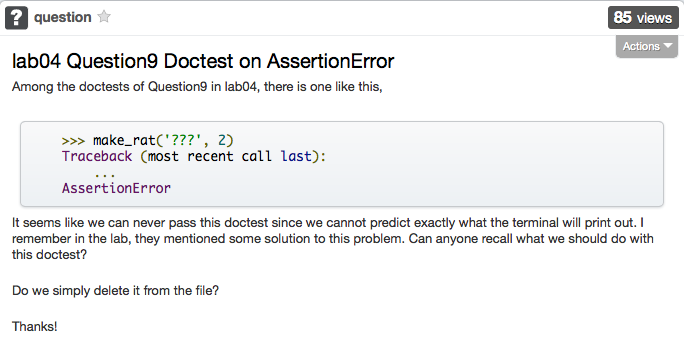Asking good questions¶
How to ask for help¶
Steps to solving a problem:
- Talk to your rubberduck.
- ...?
- Profit!
Sometimes you actually need a response from an animate object. If you actually want a helpful response, it helps to provide the right information.
Things to consider.
- Did you search for it first!
- This is a critical step. Why wait for a response when there is already one?
- Where are you posting your question?
- Is it Piazza? StackOverflow? Email?
- Don’t just dump a question onto piazza and expect to have it sovled without effort on your part.
- People like helping others who put in effort.
Vague questions get vague answers.
The guideline for posting¶
- Include the approriate details
- Title: What is the issue.
- “It doesn’t work” - isn’t an issue.
- If it crashes or errors. Include the entire error!
- Your test cases
- The error message
- What you think the error message means
- What you think might have caused the error
- Explain the question in your own words so others can quickly understand it.
- Often, you’ll solve the issue or think of something as you are doing this.
- Make sure to mention what you’ve tried.
- Screenshots and formatted code make it easier to understand
Make it clear how someone can help you.
If you resolve it makes sure to help others who would have solved it.

Practice¶
What looks easier to read?
def square(x):
return x*x
def sum_of_squares(x, y):
return square(x) + square(y)
or
def square(x):
return x * x
def sum_of_squares(x, y):
return square(x) + square(y)
Q-67: Is this a good question or a bad question?

Figure 2: No repsonse ... I wonder why?
Q-68: Is this a good question or a bad question?

Figure 2: This was responded to?